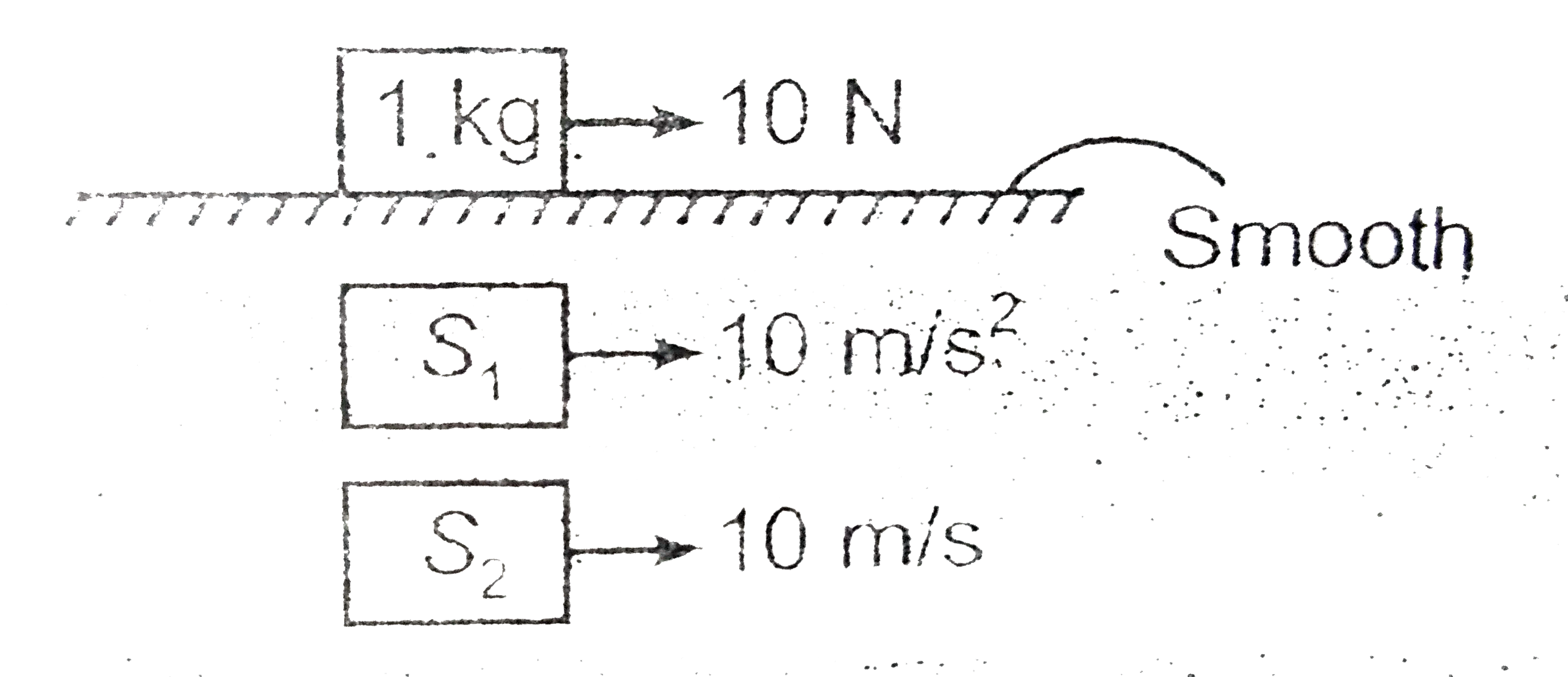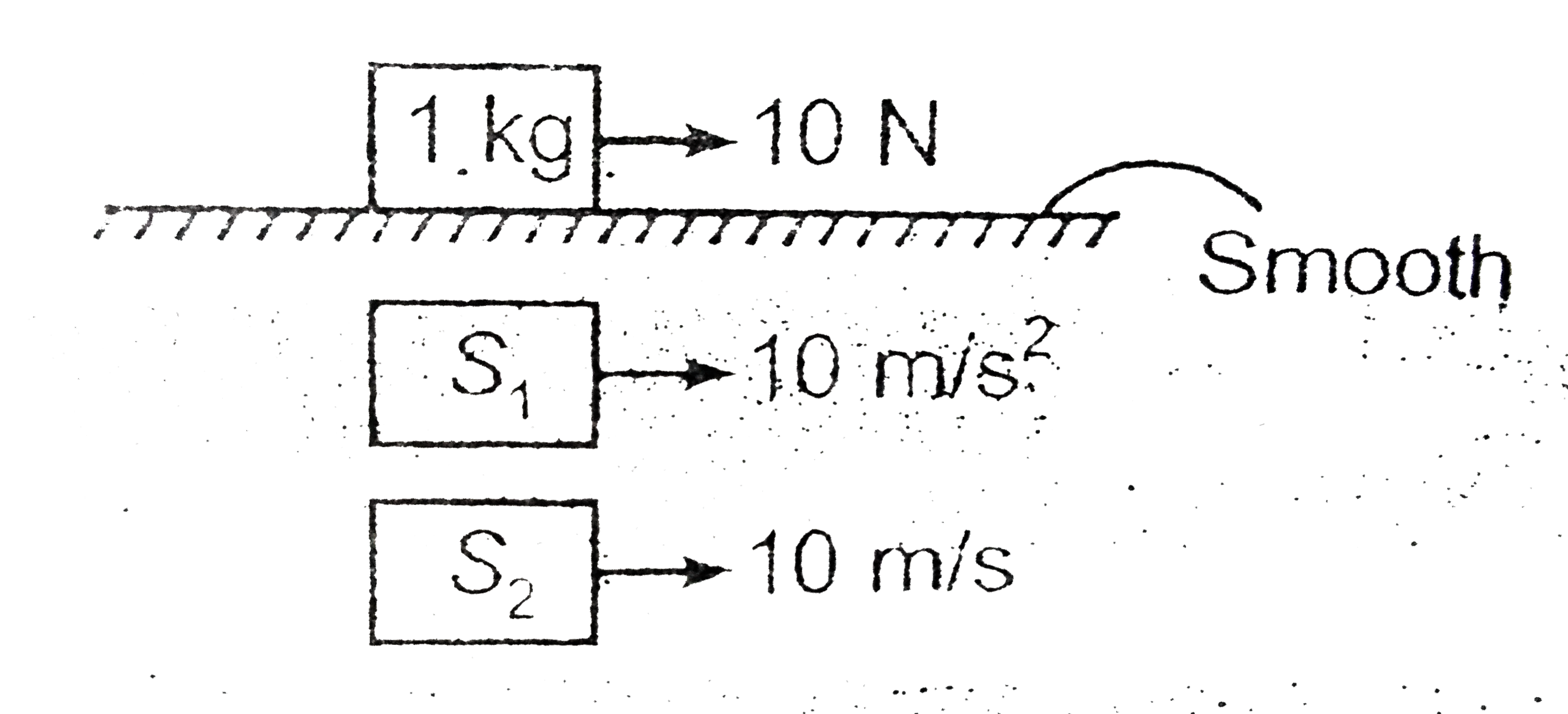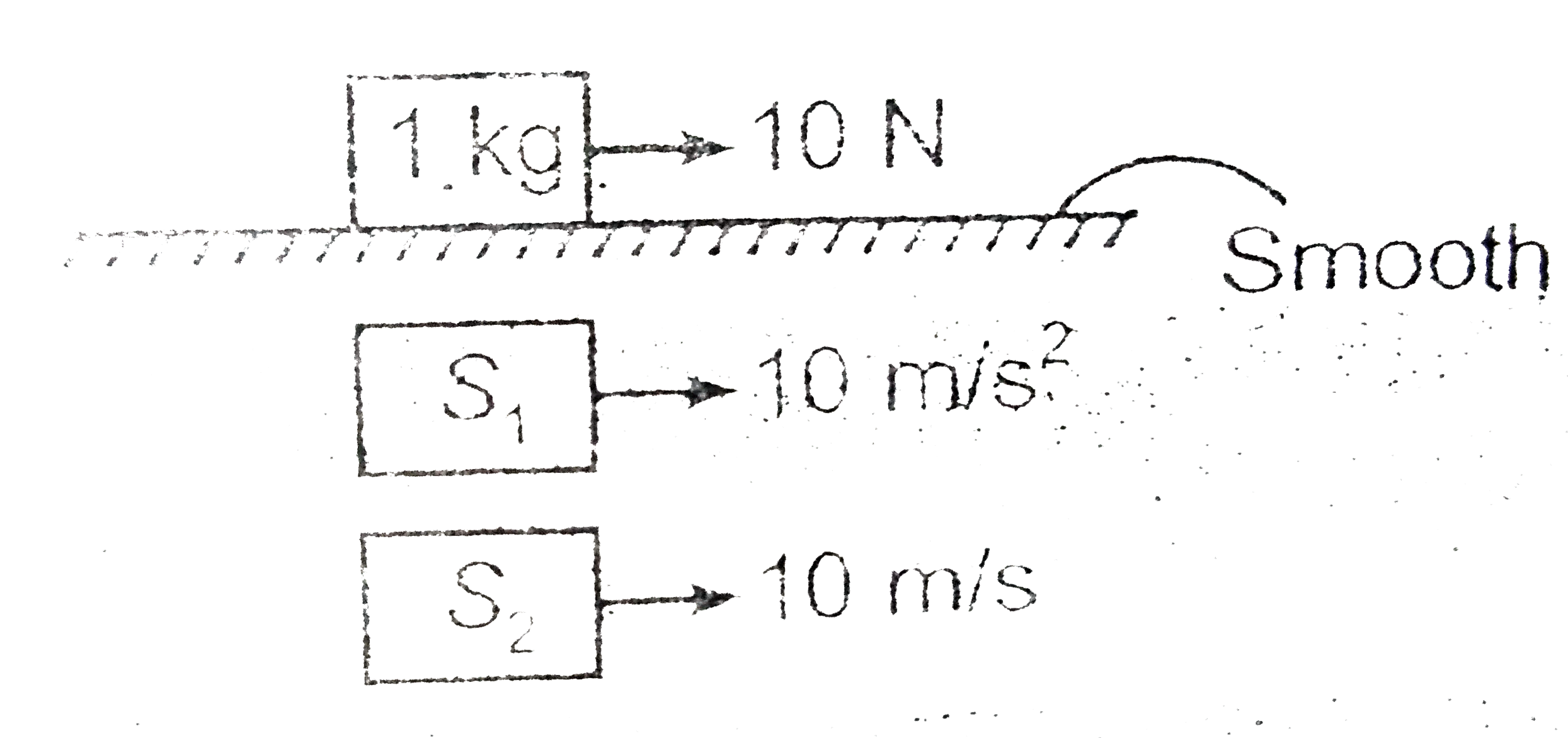A particle is observed from two frames S1 and S2. The frame S2 moves with respect to S1 with an acceleration α. Let F1 and F2 be the pseudo forces on the particle when seen from S1 and S2 respectively. Which of the following are not possible ?
F1=0,F2≠0
F1≠0,F2=0
F1≠0,F2≠0
F1=0,F2=0
The correct Answer is:D
Topper's Solved these Questions
- LAWS OF MOTIONBOOK - AAKASH SERIESCHAPTER - LAWS OF MOTIONEXERCISE - EXERCISE - II
117 Videos
- LAWS OF MOTIONBOOK - AAKASH SERIESCHAPTER - LAWS OF MOTIONEXERCISE - PRACTICE EXERCISE
98 Videos
- LAWS OF MOTIONBOOK - AAKASH SERIESCHAPTER - LAWS OF MOTIONEXERCISE - Application
6 Videos
- GEOMETRICAL OPTICSBOOK - AAKASH SERIESCHAPTER - GEOMETRICAL OPTICSEXERCISE - ADDITIONAL PRACTICE EXERCISE (LEVEL-II PRACTICE SHEET (ADVANCED) INTEGER TYPE QUESTIONS)
6 Videos
- LOGIC GATESBOOK - AAKASH SERIESCHAPTER - LOGIC GATESEXERCISE - Exercise (Very Short Answer)
16 Videos
Similar Questions
A particle is observed from two frames S1andS2. Lthe frame S2 moves with respect toS1 with an acceleration a. Let F1andF2 be the pseudo forces on the particle when seen from S1andS2 respectively. Which of the following are not possible/
View SolutionTwo frame S1 and S2 are non-inertial. Then frame S2 when observed from S1 is inertial.
A frame in motion is not necessarily a non-inertial frame
View Solution
Knowledge Check
A particle is observed from two frames S1andS2. The frame S2 moves with respect to S1 with an acceleration a. Let F1andF2 be the pseudo forces on the particle when seen from S1andS2 respectively. Which of the following are not possible ?
AF1≠0,F2=0BF1≠0,F2≠0CF1=0,F2≠0DF1=0,F2=0A particle is observed from two frames S1andS2. The frame S2 moves with respect to S1 with an acceleration a. Let F1andF2 be the pseudo forces on the particle when seen from S1andS2 respectively. Which of the following are not possible ?
AF1=0,F2≠0BF1≠0,F2=0CF1≠0,F2≠0DF1=0,F2=0Two frame S1 and S2 are non-inertial. Then frame S2 when observed from S1 is inertial.
A frame in motion is not necessarily a non-inertial frameAIf both Accertion and Reason are true and the reason is correct explanation of the Assertion.BIf both Assertion and Reason are true but reason is not the correct explanation of Assertion.CIf Assertion is true, but the Reason is false.DIf Assertion is false but the Reason is true.
Two frame S1 and S2 are non-inertial. Then frame S2 when observed from S1 is inertial.
A frame in motion is not necessarily a non-inertial frame
View SolutionA constatnt force of 10 N act on a block as shown in figure intal velocity of the particle is zero. It is observed from three frames of reference S1,S2 and ground. The frame S1 start from rest and move with constnat acceleration 10m/s. The frames S1andS2 and particle start moving simultaneously at t=0.

Net work done on block in 1 s as observed from frame S2 is
View SolutionA constatnt force of 10 N act on a block as shown in figure intal velocity of the particle is zero. It is observed from three frames of reference S1,S2 and ground. The frame S1 start from rest and move with constnat acceleration 10m/s. The frames S1andS2 and particle start moving simultaneously at t=0.

Work done on block in 1 s as observed from frame S1 is
View SolutionA constatnt force of 10 N act on a block as shown in figure intal velocity of the particle is zero. It is observed from three frames of reference S1,S2 and ground. The frame S1 start from rest and move with constnat acceleration 10m/s. The frames S1andS2 and particle start moving simultaneously at t=0.

The rate at which work is done by constant force on the particle is always non-negative when observed fom
View SolutionA constatnt force of 10 N act on a block as shown in figure intal velocity of the particle is zero. It is observed from three frames of reference S1,S2 and ground. The frame S1 start from rest and move with constnat acceleration 10m/s. The frames S1andS2 and particle start moving simultaneously at t=0.

The rate at which work is done by constant force on the particle is always non-negative when observed fom
View Solution
